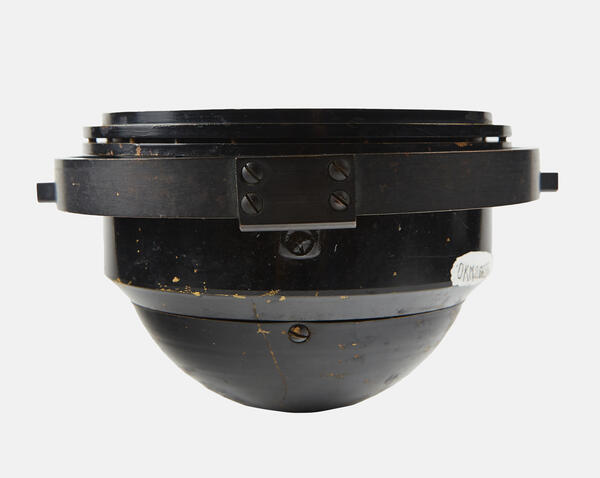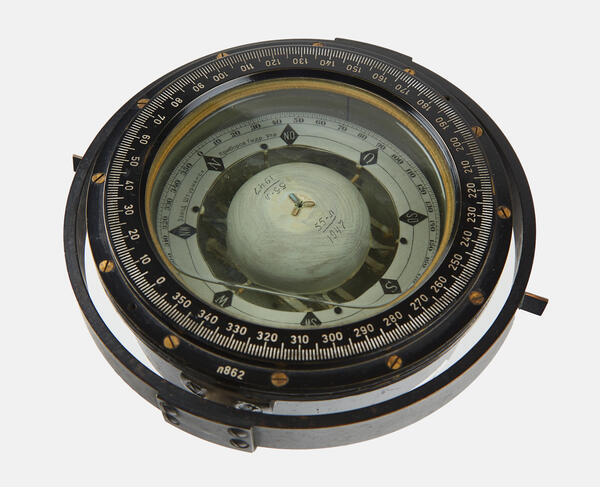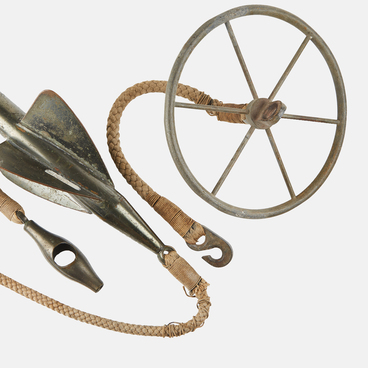The Rusanov House Museum displays a compass — the primary device that is used to set a vessel’s course and determine the bearings (the directions of objects concerning the vessel).
Navigation techniques involve the use of compasses that operate on magnetic or gyroscopic principles. Magnetic compasses are used as backup and control devices. According to their purpose, there are standard and spare magnetic compasses. The standard magnetic compass is mounted on the upper deck on centerline to have a clear view of the sky to the horizon in all directions. An optical system projected the image of the scaled floating dial onto a mirror reflector in front of the helmsman. The spare compass is mounted on the bridge. If the main compass transmits the dial readings to the principal steering position, no travel compass is required.
The magnetic needle on board is affected by the ship’s magnetic field. It is a combination of two magnetic fields — the Earth’s and the ship’s one. Hence the axis is not along the magnetic meridian, but along the compass meridian. The angle between the magnetic and compass meridians is called deviation. A gyrocompass is a mechanical indicator of the true geographical meridian, designed to determine the course of an object, as well as the azimuth bearing of the oriented direction. The operating principle of the gyrocompass is based on the properties of the gyroscope and the daily rotation of the Earth.
The simplest gyrocompass consists of a gyroscope
suspended inside a hollow ball that floats in a fluid; the weight of the ball
and the gyroscope is such that its center of gravity is located on the axis of
the ball in its lower part, when the axis of rotation of the gyroscope is
horizontal. The gyrocompass is not always accurate. For example, a sharp change
in course or speed causes deviation that will be displayed until the gyroscope
adjusts for the change. Most modern ships have satellite navigation systems
(such as GPS) and/or other navigation aids that feed corrections into the
computer built into the gyrocompass. Modern laser gyroscopes do not make such
errors since they do not use mechanical parts but have two independent
counter-propagating resonant modes over the same path.





